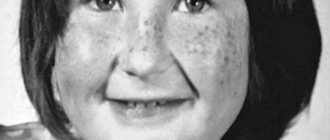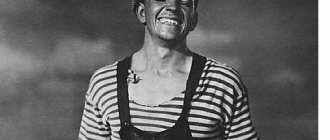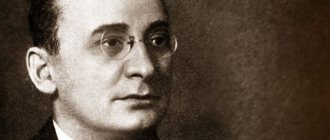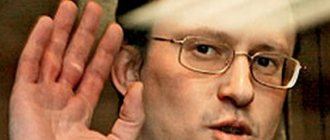Biography
The author of The Lord of the Rings, John Tolkien, is a talented writer who became the progenitor of a new genre in the world of literature and influenced writers of subsequent years. It is not surprising that modern fantasy is built on the archetypes invented by John. The master of the pen was imitated by Ursula Le Guin, JK Rowling, Christopher Paolini, Terry Brooks and other authors.
Childhood and youth
Few people know that in fact John Ronald Reuel Tolkien was born on January 3, 1892, in the African town of Bloemfontein, which until 1902 was the capital of the Orange Republic. His father Arthur Tolkien, a bank manager, and his pregnant wife Mabel Suffield moved to this sunny place because of a promotion, and on February 17, 1894, the lovers had a second son, Hilary.
Famous portrait of John Tolkien
It is known that Tolkien’s nationality is determined by German blood - the writer’s distant relatives came from Lower Saxony, and John’s surname, according to the writer himself, comes from the word “tollkühn”, which translates as “recklessly brave”. According to the surviving information, most of John's ancestors were artisans, while the writer's great-great-grandfather was the owner of a bookstore, and his son sold fabrics and stockings.
Tolkien's childhood was uneventful, but the writer often recalled an incident that happened to him in early childhood. One day, while walking in the garden under the scorching sun, the boy stepped on a tarantula, and it immediately bit little John. The child rushed around the street in a panic until the nanny caught him and sucked the poison out of the wound.
John Tolkien as a child
John used to say that that event did not leave terrible memories of eight-legged creatures and he was not overcome by arachnophobia. But, nevertheless, creepy spiders are often found in his numerous works and pose a danger to fairy-tale creatures.
When John was 4 years old, he went with Mabel and his younger brother to visit relatives in England. But while the mother and sons were admiring the British landscapes, a misfortune happened in Bloemfontein: the main breadwinner in the family died of rheumatic fever, leaving his wife and children without a livelihood.
John Tolkien with his younger brother Hilary
It so happened that the widow and the boys settled in Sayrehole, the homeland of her ancestors. But Mabel’s parents greeted her inhospitably, because at one time Tolkien’s grandparents did not approve of the marriage of their daughter and an English banker.
The mother of John and Hilary, struggling to make ends meet, did everything she could. The woman made a bold and eccentric decision for that time - she converted to Catholicism, which was a blatant act for England of those times, which did not accept such a branch of Christianity. This allowed the Baptist relatives to renounce Mabel once and for all.
John Tolkien in his youth
Suffield was spinning like a squirrel in a wheel. She herself taught the children to read and write, and John was known as a diligent student: by the age of four, the boy learned to read and devoured the works of the classics one after another. Tolkien's favorites were Lewis Carroll and George MacDonald, but the future writer did not like the works of the Brothers Grimm and Stevenson.
In 1904, Mabel died of diabetes, and the boys remained in the care of her spiritual mentor Francis Morgan, who served as a priest of the Birmingham church and was fond of philology. In his free time, Tolkien enjoyed painting landscapes, studying botany and ancient languages - Welsh, Old Norse, Finnish and Gothic, thereby demonstrating linguistic talent. When John was 8 years old, the boy entered King Edward's School.
John Tolkien
In 1911, the talented young man organized a secret “Tea Club” and “Barrovian Society” with his comrades Rob, Geoffrey and Christopher. The fact is that the guys loved tea, which was sold illegally in the school and library. In the autumn of the same year, John continued his studies; his choice fell on the prestigious Oxford University, where the gifted guy entered without much difficulty.
Early years and family
John Ronald Reuel Tolkien was born in Bloemfontein, South Africa, on January 3, 1892. His parents were Arthur Tolkien and Mabel Suffield Tolkien. After Arthur Tolkien died from complications of rheumatism, Mabel settled with John and his younger brother, Hilary, in the country farm of Sarehole, in Birmingham, England.
Tolkien's Mabel died in 1904, and Tolkien's brothers were sent to live with relatives and in boarding homes, with a Catholic priest providing guardianship in Birmingham. John. went on to obtain a first class degree at Exeter College, specializing in Anglo-Saxon and Germanic languages and classical literature.
Literature
It so happened that after graduating from university, John went to serve in the army: in 1914, the guy expressed a desire to become a participant in the First World War. The young man participated in bloody battles and even survived the Battle of the Somme, in which he lost two comrades, because of which Tolkien’s hatred of military action haunted him for the rest of his life.
John Tolkien in military uniform
John returned from the front as an invalid and began earning money by teaching, then climbed the career ladder, and at the age of 30 received the position of professor of Anglo-Saxon language and literature. Of course, John Tolkien was a talented philologist. Later, he said that he invented fairy-tale worlds only so that the fictional language, corresponding to his personal aesthetics, seemed natural.
At the same time, a man who was reputed to be the best linguist at Oxford University took up an inkwell and a pen and came up with his own world, the beginning of which was laid while still at school. Thus, the writer created a collection of myths and legends, called “Middle-earth,” but later became “The Silmarillion” (the cycle was released by the writer’s son in 1977).
Illustration for John Tolkien's book "The Hobbit, or There and Back Again"
Further, on September 21, 1937, Tolkien delighted fantasy fans with the book “The Hobbit, or There and Back Again.” It is noteworthy that John invented this work for his young children, so that in the family circle he could tell his offspring about the brave adventures of Bilbo Baggins and the wise wizard Gandalf, owner of one of the rings of power. But this fairy tale accidentally found its way into print and gained wild popularity among readers of all ages.
In 1945, Tolkien presented to the public the story "Niggle's Leaf", imbued with religious allegories, and in 1949 the humorous fairy tale "Farmer Giles of Ham" was published. Six years later, Tolkien begins working on the epic novel “The Lord of the Rings,” which is a continuation of the tales about the adventures of a brave hobbit and a powerful wizard in the wonderful world of Middle-earth.
John Tolkien's Lord of the Rings trilogy
John's manuscript turned out to be voluminous, so the publishing house decided to divide the book into three parts - The Fellowship of the Ring (1954), The Two Towers (1954) and The Return of the King (1955). The book became so famous that a Tolkien “boom” began in the United States; American residents swept John’s book works off store shelves.
In the 1960s, the cult of Tolkien began in the homeland of jazz, which brought John recognition and fame; it was even said that it was time to award the master the Nobel Prize in Literature. However, unfortunately, this award bypassed Tolkien.
Editions of John Tolkien's The Silmarillion
John then wrote a series of poems, The Adventures of Tom Bombadil and Other Poems from the Scarlet Book (1962), The Road Goes Far and Away (1967), and the short story The Blacksmith of Great Wootton (1967).
The remaining manuscripts, for example “Tales of the Fairyland” (1997), “The Children of Hurin” (2007), “The Legend of Sigurd and Gudrun” (2009) were published posthumously by John’s son Christopher, who later also became a writer who created “The History of Middle-earth” ”, where he analyzed his father’s unpublished works (the cycle includes the volumes “The Book of Lost Tales”, “The Structure of Middle-earth”, “The Ring of Morgoth” and others).
John Ronald Reuel Tolkien
FacebookTwitterGoogleVkOdnoklassniki
On January 3, 1892, in the small city of Bloemfontein, the capital of the Orange Free State (now South Africa), a great man was born - John Ronald Reuel Tolkien.
At the age of 3, his mother Mabel Tolkien (née Suffield) took him and his younger brother Hilary to England. By the age of four, thanks to the efforts of his mother, John could already read and even write his first letters. In February 1896, Tolkien's father began bleeding heavily and died suddenly. Mabel took upon herself all the care of the children. After the death of his father, the family settled in Sayrehole, near Birmingham. Mabel Tolkien was left alone with two small children in her arms and a very modest income, which was just enough to live on. Trying to find support in life, she immersed herself in religion, converted to Catholicism and gave her children an appropriate education, as a result, Tolkien remained a deeply religious person all his life.
Upon entering school, Tolkien’s innate desire for linguistics pushed him to study not only the languages themselves, but also their history, and he also studied comparative philology. Perhaps this is why a little later he begins to get acquainted with Old Germanic, Old English and Old Finnish, as well as Gothic and Icelandic. Tolkien learned most of the languages of his own free will, since they were not in the school curriculum. In addition, Tolkien, from early childhood, became interested in legends, tales and tales, although he more than once complained about their insufficient number and variety. He was even more depressed by the fact that there were very few native English legends and tales. “From an early age I was saddened by the poverty of my native country, which did not have its own legends. Greek, Celtic, German-Scandinavian, Finnish, chivalric novels - as many as you like, please; but nothing purely English, with the exception of cheap literary crafts,” Tolkien lamented.
In 1904, when John was barely twelve years old, his mother died of diabetes. Their distant relative, a priest, Father Francis, becomes the children's guardian. The brothers move back to Birmingham. Feeling longing for free hills, fields and beloved trees, John is looking for new affections and spiritual support. He becomes more and more interested in drawing, revealing extraordinary abilities. By the age of fifteen, he amazes school teachers with an obsession with philology. He reads the Old English poem Beowulf and returns to medieval legends about the knights of the Round Table. Soon he independently begins to study the Old Icelandic language, then gets to German books on philology.
John finishes school and takes exams at Oxford University in the Faculty of English Language and Literature, as a result of which he leaves Birmingham in October 1911. A little earlier, when he turned sixteen, he met Edith Bratt, his future wife. In 1913, having reached adulthood, John Ronald proposes to Edith.
In 1914, with the outbreak of World War I, Tolkien rushes to complete his Oxford degree so he can volunteer for the army. At the same time he enrolls in courses for radio operators and communications operators. In July 1915, he passed the English language and literature exam for a bachelor's degree ahead of schedule and received a first-class honor. After undergoing military training in Bedford, he was awarded the rank of sub-lieutenant and assigned to serve in the regiment of Lancashire Fusiliers. In March 1916, Tolkien got married, and on July 14, 1916 he went into his first battle.
Among the important events of this time, it is worth noting the four-month battle of the Somme, after which Tolkien spent many months wandering around hospitals. After suffering from trench fever and losing his best friends, he goes home to England to his wife and his favorite myths and legends.
In early 1917, Tolkien laid the foundation for The Silmarillion, beginning to write The Book of Lost Tales. At the end of 1917, Tolkien's first child, John Francis Ruel, was born.
Four years before receiving his professorship, in the fall of 1920, his second son, Michael Hilary Ruel, was born.
In 1924, Tolkien was confirmed with the rank of professor, which was very opportune: Tolkien’s family grew, for example, in 1924 the writer’s third son, Christopher John Ruel, was born, but no funds were added for its maintenance, and in 1925 he was awarded the chair of Anglo-Saxon language at Oxford. At the same time, he continues to work on The Silmarillion, creating a new incredible world.
Among the important events of the second half of the 20s, it is worth noting the birth of John’s last child, Priscilla’s first and only daughter, as well as the beginning of writing the children’s fairy tale “The Hobbit” (“The Hobbit, or There and Back Again”).
Priscilla
The most interesting thing is that Tolkien wrote this story for his children, but the popularity of the book went far beyond the family. At some time, John Ronald even thought that from now on he would be considered not a linguist professor, but a children's writer. The publishing house that published The Hobbit, in turn, asks Tolkien to continue the story about funny little people, and in response to the writer’s proposal to publish The Silmarillion, they just wave their hands, declaring that readers definitely need hobbits. Having realized what they want from him, he begins work on the Lord of the Rings trilogy.
The first part of the book was released in 1954, the second and third - after a delay of nine months, reviews were favorable. Very soon the second edition was published, followed by translations into other languages.
But the main work of Tolkien's life, The Silmarillion, was never completed. It was prepared for publication by Tolkien's youngest son Christopher.
Tolkien died in 1973. Edith had died two years earlier.
During his lifetime, the professor ordered a slab with the inscription: “Edith Mary Tolkien, Luthien, 1889-1971” to be installed on his wife’s grave. He himself was buried in the same grave, and Christopher added to the inscription on the slab: “John Ronald Reuel Tolkien, Beren, 1892-1973.”
Sources:
"Biography of John Ronald Rael Tolkien (Tolkien)"
John Ronald Reuel Tolkien / JRR Tolkien
John Ronald Reuel Tolkien. Life and Legends (Biographical Sketch)
Antonia Graza
Especially for kinokorob.ru
World of Middle-earth
It is worth noting that Tolkien’s works contain biblical stories, and the books themselves are the real world, passed through the prism of literary allegories, for example, there is a parallel between Frodo and Jesus Christ, which is visible to the naked eye.
Elijah Wood as Frodo
Rumor has it that from an early age John had dreams about the Flood, was interested in the history of Atlantis, Shakespeare's books and epic poems, including trying to translate the story of Beowulf. Therefore, the creation of Middle-earth is not an accident caused by creative inspiration, but a true pattern.
The Middle World (as his son calls part of Tolkien’s fictional universe) is what John Ruel devoted his entire life to. Middle-earth is the setting for some of the writer's works, where events from The Hobbit, the Lord of the Rings trilogy and partly The Silmarillion and Unfinished Tales develop.
Illustration for John Tolkien's book "The Hobbit, or There and Back Again"
It is noteworthy that the world, immersing every reader in magical adventures and the confrontation between good and evil, is thought out to the smallest detail. John not only meticulously described the territory and the races inhabiting it, but also drew several maps that cover part of the fictional space (not all of them made it to publication).
He also came up with a chronology of events before the Solar Years, which begin from the Velian era and end with the last battle that concludes the history of Arda - Dagor Dagorath. In the books themselves, the writer calls the component of Arda, located in the east and representing the habitat of mortals, Middle-earth.
Middle Earth Map
Indeed, John said more than once that the continent was on our planet. True, it existed in the distant past and was a brief episode in the history of the Earth. However, the author spoke of Middle-earth as a secondary reality and a different level of imagination.
The area is divided by the Misty Mountains, to the north is the Gulf of Forokhel, surrounded by blue mountains, and to the south is the stronghold of the corsairs. Middle-earth also includes the state of Gondor, the region of Mordor, the country of Harad, etc.
Elf from the world of John Tolkien - from Middle-earth
The continent invented by Tolkien is inhabited by both people and keen-sighted elves, hardworking gnomes, cunning hobbits, giant ents and other fairy-tale creatures who speak the languages \u200b\u200bQuenya, Sindarin and Khuzdul created by the writer.
As for flora and fauna, the fictional world is inhabited by ordinary animals; book characters often ride horses and ponies. And among the plants in Middle-earth, wheat, tobacco, rye, root crops grow, and grapes are also cultivated.
John Tolkien short biography
John Tolkien (full name - John Ronald Ruel Tolkien) was born
January 3 1892
in Bloemfontein, South Africa, where John's parents, Arthur Ruel and Mabel Tolkien, had to move due to his father's promotion.
Four
years
later, 1896
, Arthur Tolkien died of rheumatic fever and the writer’s mother had to return to England with two children and little income.
Left without the support of her husband and relatives, Mabel found herself in religion and converted to Catholicism. The woman wanted her sons to grow up as educated people. Mabel taught her sons reading, writing, basic botany, Latin and drawing from a young age. The children delighted her with her success in science. Little Tolkien learned to read and write at the age of four.
John's mother dies of diabetes in 1904
year. She was only 34 years old. She entrusted the upbringing of her sons to the priest Father Francis Morgan, who managed to instill in John a love of philology.
Young John enters 1900
year at King Edward's School, where he discovered a talent for linguistics.
He studied many languages: starting with Old English, Old Norse, Old Welsh and others. Later he began to invent and develop fictitious languages of elves and dwarves. During his life, Tolkien was able to learn 14
languages, and develop
19
languages of fairy-tale peoples.
In 1911
he continued his studies at Oxford University.
John Tolkien falls in love with Protestant Edith Brett. Having promised Father Francis that he would not think about love until he came of age and meet Edith, the writer studied and never met his beloved until his birthday. On his birthday, when John turned 21
year, he writes a letter to his beloved Edith proposing marriage.
At that time, his beloved had already given her consent to marry another young man. Edith broke off the engagement, converted to Catholicism, and
John and Edith married
1916 Their marriage was a happy union that lasted 56
years. His beloved, who became the prototype of the beautiful Luthien, gave the writer three sons and a daughter.
Having graduated from the university with honors, John went to serve with the rank of lieutenant and then the First World War began. He was called to the front, where his best friends died, and he himself fell ill with typhus and was treated in hospitals for a long time. He was commissioned with a disability and hatred in his soul for all wars. The writer devotes himself entirely to his career. He worked as a lecturer at the University of Leeds. He achieved a professorship at the University of Oxford teaching literature and Anglo-Saxon language. He received the title of youngest professor in 30
years. He was also recognized as the best philology scientist in the world.
During the same period, Tolkien began writing his cycle of myths and legends of the fairy-tale country of Middle-earth, which later received the book title “The Silmarillion.” For his children, he composed and wrote down the fairy tale "The Hobbit", which was published at the insistence of Stanley Anwin in 1937
year.
Unexpectedly for the publisher and writer, The Hobbit was a success and Annuin advised the writer to write a continuation of the story. This took the writer a lot of time, and the manuscript was completed only in 1954
.
The author offered his manuscript to publishing houses for publication, but the publishers wanted to cut down his work and release it only in an abridged version. The writer could not do this. Only in 1960-
In the 1980s the manuscript was published. At that time, young people were passionate about the ideas of the “hippie” movement and promoted freedom and ideas of peace and goodness. The novel quickly became popular and brought fame to the writer.
IN 1971
year his beloved wife dies and Tolkien returns to Oxford University.
After some time, he began to have stomach pains. 30 August
he attended Mrs Tolhurst's birthday party.
I ate little and drank a little champagne. After the holiday, he had an attack of stomach pain. Doctors at a private clinic discovered a stomach ulcer that was bleeding and led to the development of pleurisy. September 2 , 1973
, writer John Tolkien died.
He was 81
years old. He was buried in the same grave with his wife.
All works after 1973
published by their son Christopher.
25
were published . But the main work remains the Lord of the Rings trilogy. Thanks to the trilogy, the author entered literature as the “father of the fantasy genre.”
Personal life
Mabel passed on her love of God to her son, so John Tolkien remained a devout Catholic all his life, knowing all church rituals. As for politics, the writer was a traditionalist and sometimes advocated the collapse of Great Britain, and also disliked industrialization, preferring a simple, measured rural life.
John Tolkien and his wife Edith
From John's biography it is known that he was an exemplary family man. In 1908, the fantasy author met Edith Brett, who at that time was an orphan and lived in a boarding school. The lovers often sat in a cafe, looked at the sidewalk from the balcony and amused themselves by throwing sugar cubes at passers-by.
But the priest Francis Morgan did not like the relationship between John and Edith: the guardian believed that such a pastime interfered with his studies, and besides, the girl professed a different religion (Brett was a Protestant, but converted to Catholicism for the sake of marriage). Morgan set a condition for John - he could only count on the blessing when he turned 21.
John Tolkien with family
Edith thought that Tolkien had forgotten her, and even managed to accept a marriage proposal from another suitor, but as soon as John became an adult, he did not hesitate to write Brett a letter in which he confessed his feelings.
Thus, on March 22, 1916, the young people had a wedding in Warwick. The happy marriage, which lasted 56 years, produced four children: John, Michael, Christopher and daughter Priscilla.
Passage characterizing Tolkien, Mabel
– Do you want him to stay with you some more? And when we return, will you give it back to us? – Stella took pity on the little girl. Leah was at first stunned by the unexpected happiness that fell upon her, and then, unable to say anything, she nodded her head so strongly that it almost threatened to fall off... Having said goodbye to the joyful family, we moved on. It was incredibly pleasant to feel safe again, to see the same joyful light filling everything around, and not be afraid of being unexpectedly grabbed by some kind of terrible nightmare... - Do you want to take another walk? – Stella asked in a completely fresh voice. The temptation, of course, was great, but I was already so tired that even if the greatest miracle on earth seemed to me now, I probably wouldn’t be able to truly enjoy it... - Well, okay, another time! – Stella laughed. - I am also tired. And then, somehow, our cemetery appeared again, where, on the same bench, our grandmothers were sitting side by side... - Do you want to show me something?... - Stella asked quietly. And suddenly, instead of the grandmothers, incredibly beautiful, brightly shining beings appeared... Both had amazing stars sparkling on their chests, and Stella’s grandmother had an amazing miracle crown sparkling and shimmering on her head... - It’s them... You wanted to see them, right? – I nodded dumbfoundedly. – Just don’t say that I showed you, let them do it themselves. “Well, now I have to go...” the little girl whispered sadly. - I can’t go with you... I can’t go there anymore... - I’ll definitely come to you! Many, many more times! – I promised with all my heart. And the little girl looked after me with her warm, sad eyes, and seemed to understand everything... Everything that I was unable to tell her in our simple words. All the way home from the cemetery, I sulked at my grandmother for no reason, and was angry with myself for it... I looked a lot like a ruffled sparrow, and my grandmother saw it perfectly, which, naturally, irritated me even more and forced me to crawl deeper into my " safe shell”…. Most likely, it was just my childhood resentment raging for the fact that she, as it turned out, hid a lot from me and did not teach me anything yet, apparently considering me unworthy or incapable of more. And although my inner voice told me that I was completely and completely wrong here, I just couldn’t calm down and look at everything from the outside, as I did before, when I thought that I might be wrong...
Death
Edith Tolkien died at the age of 82, and John survived his wife by a year and eight months. The great writer died on September 2, 1973 from a bleeding ulcer. The writer was buried in the same grave with Edith in Wolvercote Cemetery.
John Tolkien's grave
It is worth saying that John had a tremendous influence on the culture of subsequent years. Based on John's manuscripts, board and computer games, plays, musical compositions, animations and feature films were invented. The most popular film trilogy by Peter Jackson is “The Lord of the Rings,” where the main roles were played by Elijah Wood, Dominic Monaghan, Orlando Bloom, Cate Blanchett, Andy Serkis and other actors.
Tolkien's Confession, The Lord of the Rings
In the sixties, the popularity of the epic “The Lord of the Rings” became so great that it turned into one of the main trends of that time. Tea houses, restaurants, public institutions and even botanical gardens were named after Tolkien’s heroes. Some time later, many prominent figures even advocated for Tolkien to be awarded the Nobel Prize in Literature. This award, however, passed him by. Although the writer’s personal collection still accumulates a lot of awards and various literary prizes.
In addition, already at that time John Tolkien sold the rights to the screen adaptation of his works. Subsequently, prominent figures in England and the United States created numerous audio plays, games, animated films, and even full-length Hollywood blockbusters based on Tolkien's books. However, the author himself no longer found most of this. In 1971, after the death of his wife Edith Mary, the writer fell into a prolonged depression. Literally a year later, he was diagnosed with a bleeding stomach ulcer, and some time later he also had pleurisy. On September 2, 1973, Tolkien died from numerous illnesses. The great author is buried in the same grave with his wife. Many of his works (mostly short stories) were published posthumously.
Bibliography
- 1925 – “Sir Gawain and the Green Knight”
- 1937 – “The Hobbit, or There and Back Again”
- 1945 – “Leaf by Niggle”
- 1945 – “The Ballad of Aotru and Itrun”
- 1949 – “Farmer Giles of Ham”
- 1953 – “The Return of Beorchthnoth, son of Beorchthelm”
- 1954–1955 – “The Lord of the Rings”
- 1962 – “The Adventures of Tom Bombadil and Other Poems from the Scarlet Book”
- 1967 – “The road goes on and on”
- 1967 – “The Blacksmith of Greater Wootton”
Books published posthumously:
- 1976 — “Letters from Father Christmas”
- 1977 — “The Silmarillion”
- 1998 — “Roverandom”
- 2007 — “Children of Hurin”
- 2009 — “The Legend of Sigurd and Gudrun”
- 2013 — “The Fall of Arthur”
- 2015 — “The Story of Kullervo”
- 2017 — “The Tale of Beren and Luthien”











